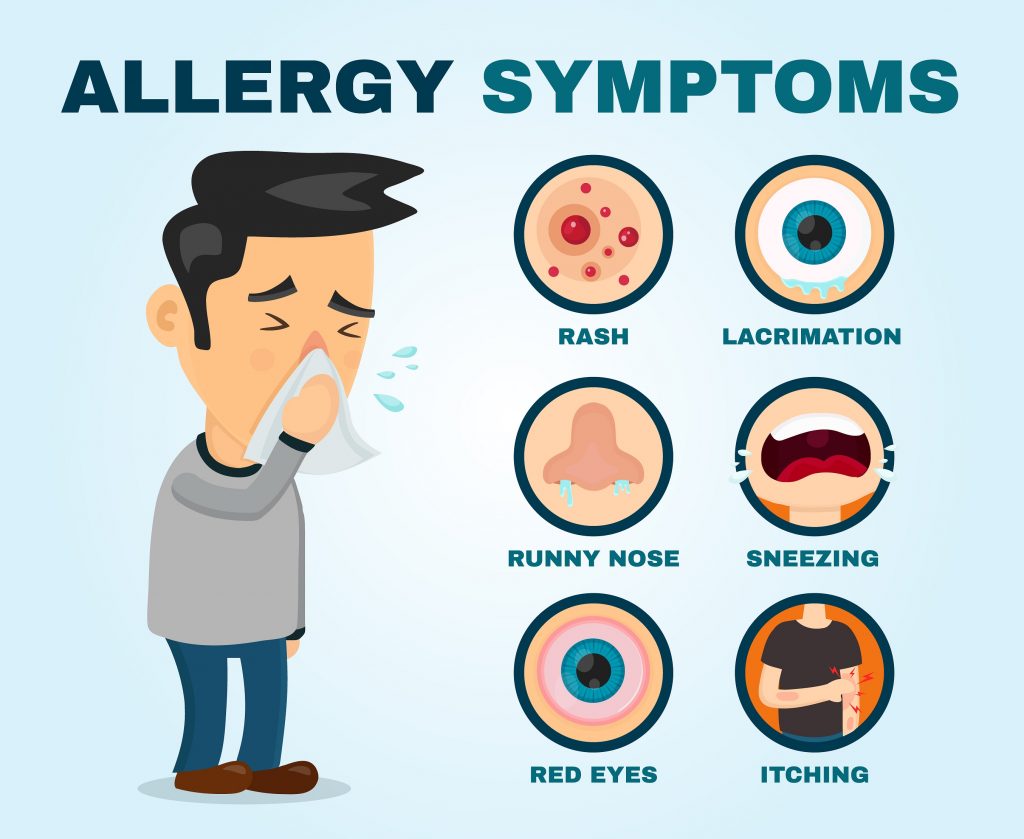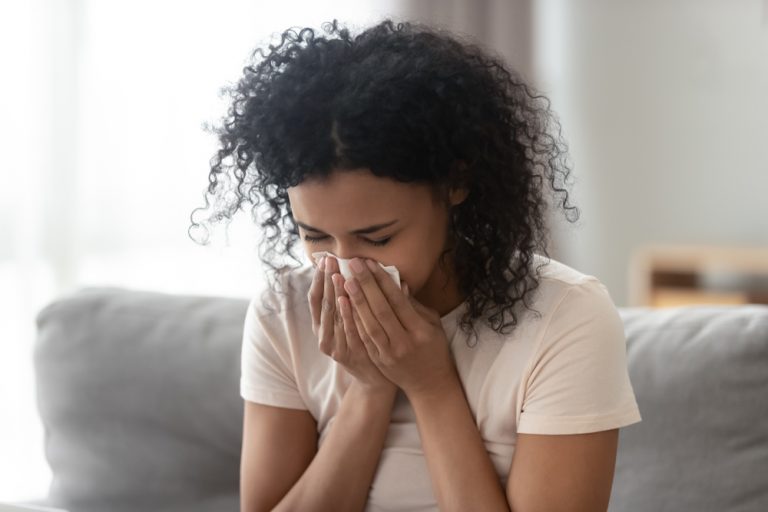We talk about an allergy when a substance that is actually completely harmless causes an incorrect reaction in our immune system as if it encounters a harmful substance. The symptoms of allergy can be very different. Allergy is called atopy - it is inherited from ancestors, especially in the first and second generation. It is not uncommon for the whole family to be allergic to the same substance.
A harmless sneeze or something else?
Allergens can enter our body in different ways. This most often occurs when the immune system encounters an allergenic substance entering the body simply with the air being inhaled. These substances are called inhalation allergens - they include pollen, mites (i.e. classic domestic dust cats), hair, saliva and other animal secretions and mould. The attacked organism defends itself against cough and cold, and the eyes try to get rid of the irritating substance through tearing - that is why the most common complications, which are caused by inhalation allergies, are hay fever and bronchial asthma.
Another way that allergens reach the interior of our body is through the digestive tract. The most common food allergens are eggs, nuts, fish, cow's milk, cereals and fruit, usually citrus, and people allergic to these products should avoid eating them not only as dishes in themselves but also as ingredients in more complicated dishes. Food allergies can also be caused by highly processed food, especially products with a lot of artificial colourings and sodium glutamate. Antibiotics and other drugs may also make us more sensitive - this should be borne in mind when a doctor writes a prescription.

If an allergy sufferer consumes an allergenic component, he may experience unpleasant symptoms typical of food poisoning (diarrhoea, vomiting, swelling of the throat), but also classic rash, itching, tingling of the tongue or skin redness. An extreme case of an allergic reaction will be a loss of consciousness or anaphylactic shock.
The effect of contact allergens, i.e. those we directly touch, will be most visible on the skin. Allergens, and thus cause all kinds of allergic changes on the skin, may include non-precious metals (e.g. those used to make artificial jewellery), rubber products, household chemicals and cosmetics ingredients, and individual types of plastic. One of the most dangerous allergies is the allergy to insect venom - to insects and pollen, the body reacts immediately, depending on its own predisposition, with a light rash or a much more serious allergic reaction.
How can an allergenic be sensitized?
An allergic reaction to an allergen need not be a permanent reaction - sometimes allergies only affect us in our childhood or in mature age. If we want to make it easier for the body to deal properly with substances that have so far sensitised it, we should ensure that it is strengthened and regularly detoxified. The first stage in the fight against allergy, however, should always be to eliminate allergens from the allergenic diet.
What can help keep the body in optimal health must contain a lot of nutrients, building blocks and energy. These will include, for example, the fruit of the noni plant or the extract of the lichen berry, which, by enriching the diet with essential polysaccharides, will strengthen the immune system and improve the overall psychophysical condition of the body, thus reducing its allergic reactions.
For strengthening, juice or its more concentrated version, i.e. aloe vera gel will also be perfect. Aloe vera is known mainly for its antibacterial values, but at the same time, it increases immunity perfectly, stimulating immune mechanisms to more intensive work. Such a nourished and internally strengthened organism will be ready to face more than one allergy.






